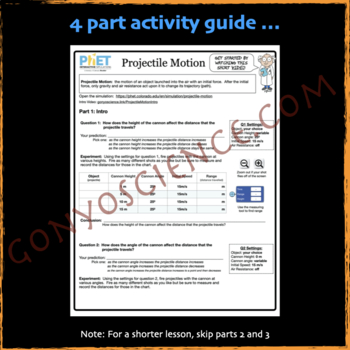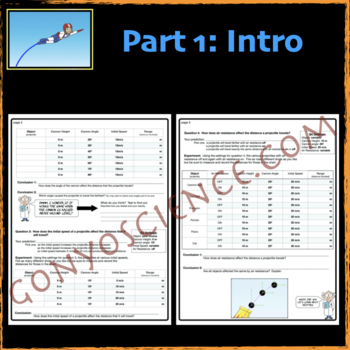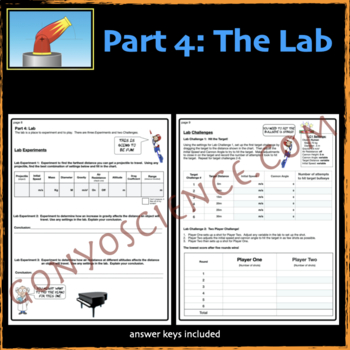PhET Projectile Motion activity guide
- Zip
- Google Apps™
- Easel Activity

What educators are saying
Also included in
- Now includes both printable PDF and Google Slides versions!The PhET Physics Activity Guides are used along with the free *Next Generation PhET Simulations. All activity guides are in PDF and Google Slides formats and include an answer key and a Getting Started Guide for teachers.Your students will hPrice $27.00Original Price $30.00Save $3.00
Description
The PhET:Projectile Motion Activity Guide is used along with the free *Next Generation PhET Simulation on Projectile Motion. Students learn how the motion of a projectile is affected by changes in the initial height, initial speed, cannon angle, and other variables with or without the affects of wind resistance. This activity guide follows closely with the newest (HTML5) version of the PhET Projectile Motion simulation.
Your students will hit the ground running without the need for a lengthy introduction from you. Just print the activity guide or share from your Google Drive. Students can watch the intro video and away they go. The best part is that students don’t even know they are learning, they just think they are having fun!
The activity guide takes students through all 4 parts of the simulation: Intro, Vectors, Drag, and Lab. Students are encouraged to make predictions as to the motion of a projectile given certain parameters and then to experiment to discover how each parameter affects the projectile’s motion. For younger students, or for a quicker lesson, you can choose to skip parts 2 and 3.
The activity guide begins with a short introductory video to show students how the simulator works and includes both PDF and Google Doc versions for printing worksheets or sharing via Google Drive or Google Classroom. This lesson is perfect for face to face, hybrid, or remote learning!
This product includes the Intro video, Activity Guide (pdf), Activity Guide (Google Doc), Answer Key, and a Getting Started Guide for teachers.
*PhET simulations are fun, interactive, research-based simulations of physical phenomena. As students interact with the simulation, they get immediate feedback about the affects of the changes they made. All PhET simulations are freely available from the PhET website (phet.colorado.edu) and are easy to use and incorporate into the classroom. The new Next Generation sims utilize HTML 5 which allows them to run in any modern web browser on most devices including Chromebooks and tablets like the iPad! Learn more about using PhET Simulations with your students.







